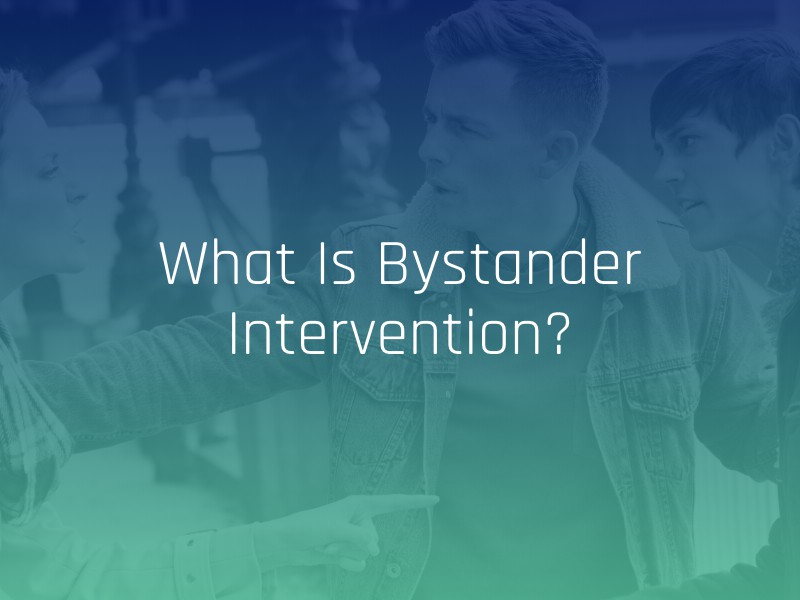Sexual violence is a rampant issue across the United States, affecting thousands of people each year. While many of us recognize these actions as wrong and inappropriate, we can hesitate to intervene when we see someone acting in a sexually violent way toward another person. By promoting bystander intervention, we can all play a role in keeping each other safe and promote healthier behaviors in our home communities.
Why Bystander Intervention Is Important
Bystander intervention is the practice of intervening in situations where something dangerous or harmful is happening or might happen to another person. For example, if you see a man slip a powder into his date’s drink at a bar, you would tell the date or a bouncer or bartender about the situation before she takes a sip.
The behaviors that promote and normalize sexual violence are pervasive in many communities across the United States. From catcalling someone as they walk down the street to party situations where one person might try to get someone intoxicated so he or she can take advantage of the other, sexual assault, harassment, and other inappropriate behaviors can occur right in front of us.
By allowing these actions to pass without consequence, we send the message that it is normal for this to occur — and as a result, more people fall victim to sexual violence. However, if more people step in and tell someone who is engaging in this behavior that sexual violence is wrong, we can better protect those around us and send a stronger message that these actions are not okay.
Tips for Engaging in Bystander Intervention
It can be difficult to intervene in potentially dangerous scenarios. You may fear for your own safety, or you may worry that you do not know enough about a situation to involve yourself. However, it is better to stay safe than to have something violent happen to someone in your community.
The following tips can help you promote bystander intervention in your community.
- If you see a situation that may constitute an act of sexual violence, disrupt it. Doing so will depend on the circumstances. For example, if you see someone harass another person on the street, you can interrupt the harasser and ask him or her if he or she knows where a certain building is. If you notice someone trying to lure a drunk person into a room at the party, go up to the pair and ask the intoxicated person if he or she could help you make snacks.
- After you disrupt a dangerous situation, check in on the person the perpetrator was targeting. Ask the person how he or she is feeling, and let him or her know that what happened wasn’t his or her fault. Make sure that you express your support to the individual clearly and honestly — ask him or her what he or she needs, and if you can do anything to obtain this support.
- If you feel safe doing so, confront the harasser and let him or her know that his or her actions were wrong. Tell him or her that the situation was inappropriate and that he or she needs to stop engaging in this behavior. The exact words you say will depend on the circumstances, but make sure to be as clear and direct as possible. To avoid escalating the situation, use respectful language.
If you see someone acting in a sexually violent or inappropriate manner toward another person, do not hesitate to intervene. Ask the person in trouble if he or she needs help, or get him or her to a safe place as quickly as possible. With bystander intervention, we can keep each other safe and help prevent sexual violence in our own communities.
Even with more bystander intervention, sexual assault, harassment, and other instances of sexual violence still occur on a daily basis. If you are a survivor of sexual violence and are looking for pathways to justice, contact a Lyft sexual assault attorney as soon as possible to discuss your legal options.

